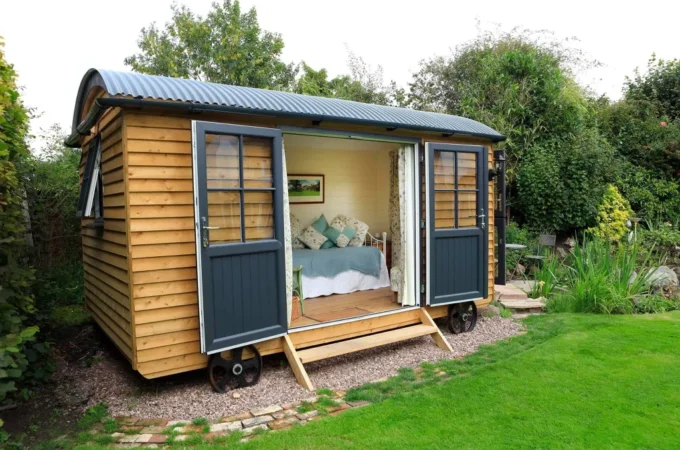
5 Factors to Consider When Choosing a Ceiling Fan
A ceiling fan can quickly become one of your home’s most useful fixtures. Simply by switching on a ceiling fan, you can turn up your thermostat by about four degrees in the summer, saving you a bundle on cooling costs. In the winter, you can reverse the direction of the fan blades to push warm air down from the ceiling. With a ceiling fan in your room, you’ll be more comfortable year-round.
It’s not hard to install a ceiling fan, either, especially not if you already have a light fixture in the ceiling where you want to hang the fan. It’s just a matter of taking down the light fixture and wiring up the fan in its place. But before you head to the hardware store to go fan shopping, here’s what you need to consider to get a fan with the features, functionality, and stylish design you need.
1) Size
Ceiling fans come in a wide range of sizes, from 28 inches to 60 inches or more in diameter. A fan with an even number of blades is measured from blade tip, across the center of the fan, to the corresponding blade tip. A fan with an odd number of blades is measured from the tip of one blade to the center of the fan; then that measurement is doubled.
You have to get the right size fan for your room — too big and you’ll be overwhelmed by the powerful air currents it creates; too small and you won’t feel a breeze at all. Use these guidelines to size a ceiling fan for your space:
- 28 to 36 inches: Rooms 75 square feet or less
- 36 to 42 inches: Rooms 76 to 144 square feet
- 50 to 54 inches: Rooms 145 to 225 square feet
- 55 inches and above: Rooms above 225 square feet
2) Design
Designers these days are making ceiling fans in a wide range of styles, from oversized industrial fans that are 90 inches wide and have eight or nine blades to sleek, minimalistic 42-inch fans with only two or three blades. As a result, ceiling fans are no longer considered dowdy and old-fashioned. Shop around and choose a fan that matches your decor. Abandon the traditional advice of choosing a fan that matches your ceiling to blend in — instead choose one with a wood or metallic finish that matches your furniture, floors and trim, or room hardware.
3) Features
Most people don’t need a plethora of features on a ceiling fan — but you do need a fan with a strong motor that has a reverse function, so you can use your fan all year round. Some features you might find on a modern ceiling fan include wall controls and remote controls — and many wall control panels for fans are actually remote controls that are mounted in the wall, so you may not need to run extra wiring. You’ll probably want a fan with a light fixture, and you may want to choose a model that offers smart functionality.

4) Weather and Climate Conditions (for Outdoor Fans)
If you’re planning to install your ceiling fan outside, you need to make sure you’re getting an outdoor-rated fan. Indoor-only fans aren’t built to withstand the moisture that fans can encounter in even an enclosed outdoor space, like a covered porch or gazebo. Indoor/outdoor fans and outdoor fans have extra weather sealing and are made with materials that can withstand the elements. If you live on the coast, consider a marine-rated fan that can withstand the corrosive power of the salty sea winds.
5) Profile
If you have normal ceilings that are eight or nine feet high, you can probably use a normal ceiling fan with a three-to-five inch downrod. But if your ceilings are lower than eight feet, you should choose a low-profile fan designed to preserve headspace — there are many flush mount ceiling fan models on the market, so you can stay cool without banging your head on the fan blades every day.
On the other hand, if you have a very high ceiling, you may want a fan that hangs further down. You can buy longer downrods that allow you to hang your new fan anywhere from several inches to several feet below the ceiling. You may need a special attachment kit to hang a fan from a very steeply vaulted ceiling, though.
When it comes to choosing a ceiling fan, it’s important to make the right choice. Choose a durable fan that’s sized right for your space, and you’ll soon feel that installing your new ceiling fan was the right call to make.




